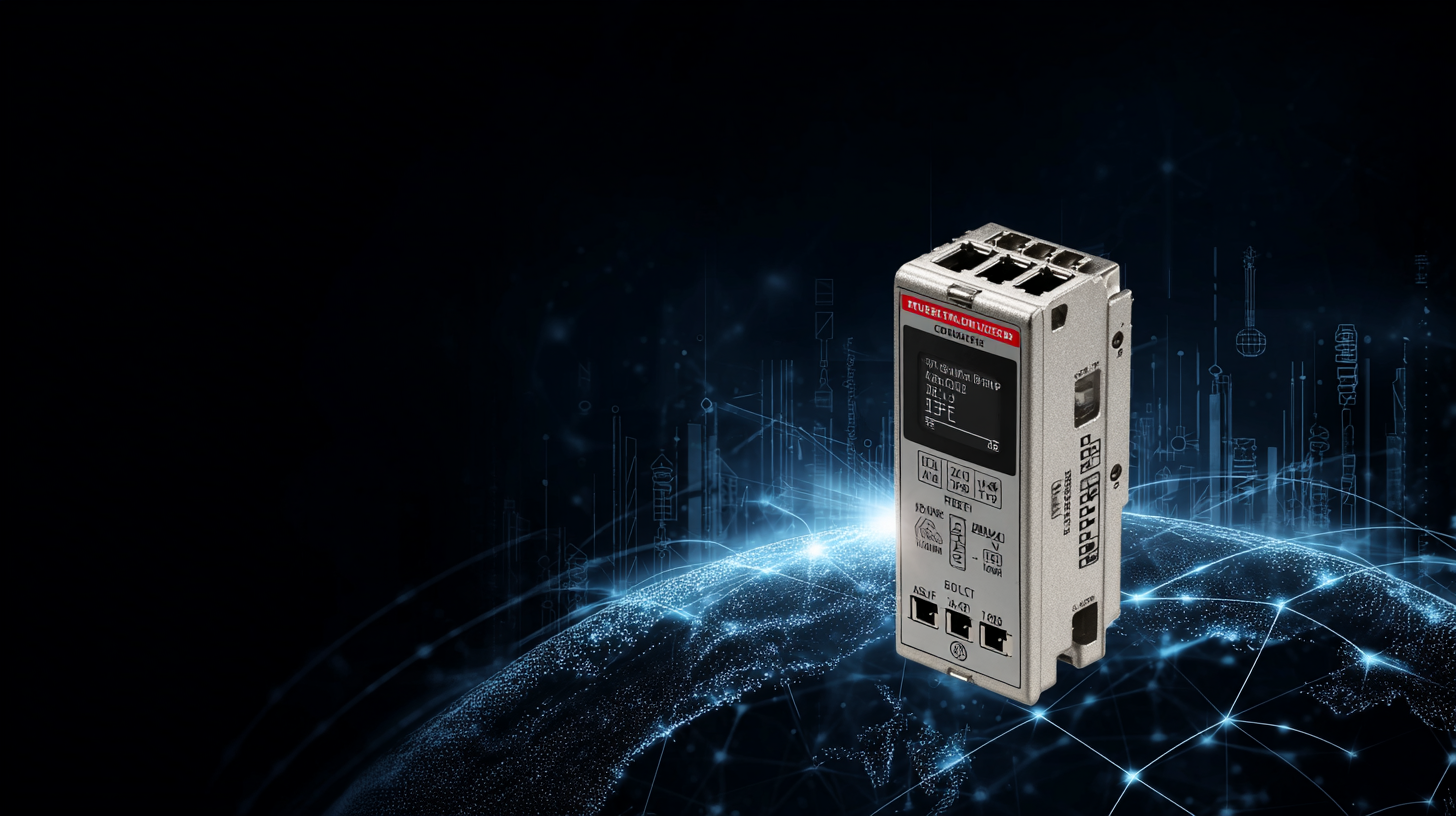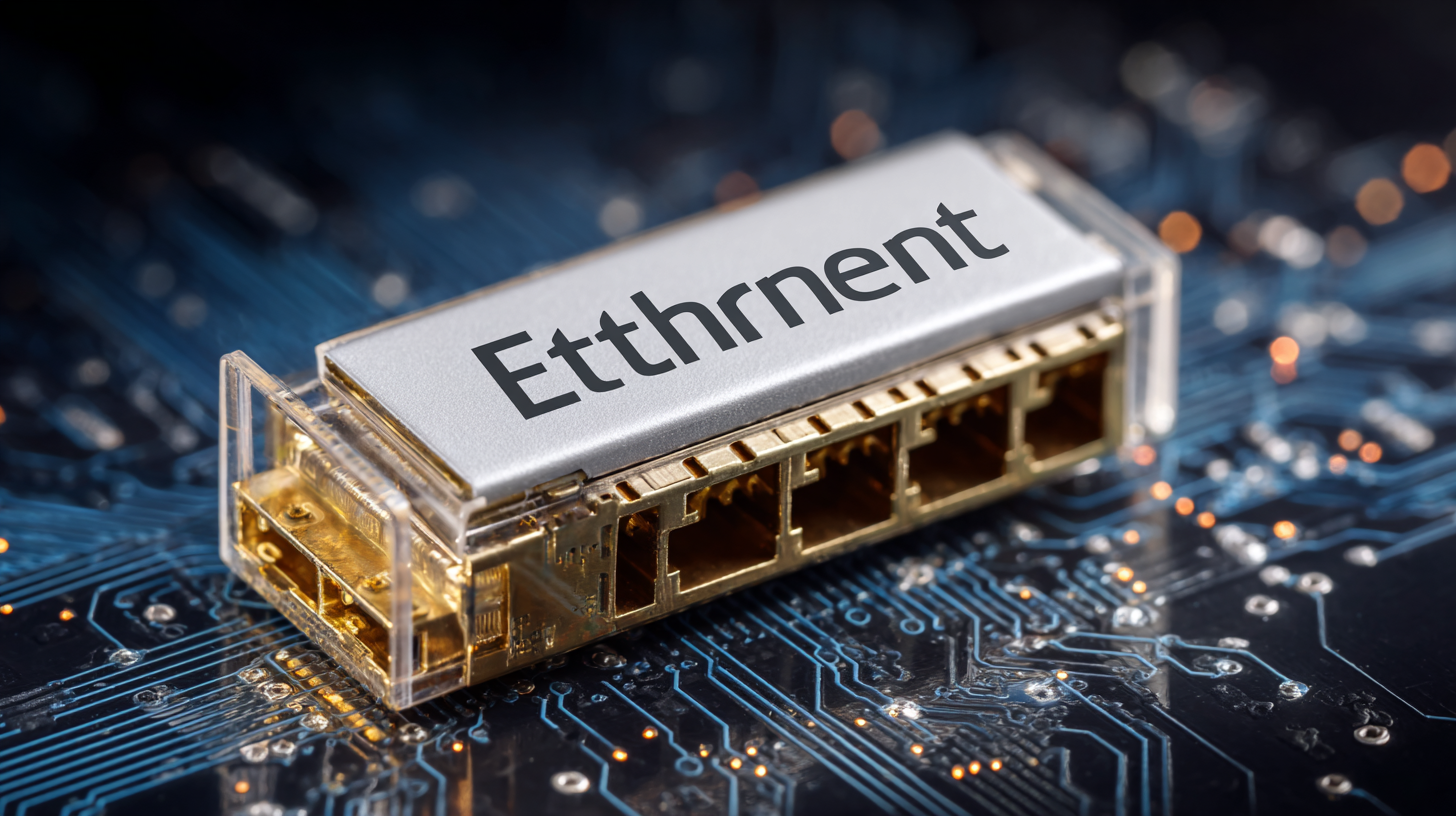
2025 Industry Trends: How to Choose the Best Ethernet Adapter for Global Procurement
As we look ahead to the dynamic landscape of 2025, understanding the evolving industry trends is crucial for global procurement professionals. One key component of modern connectivity solutions is the Ethernet Adapter, which plays a vital role in ensuring seamless communication and data transfer across various platforms and devices. With advancements in technology and the increasing demand for high-speed internet connectivity, selecting the right Ethernet Adapter is more important than ever.

This blog will explore the myriad benefits of different types of Ethernet Adapters, helping procurement specialists make informed decisions that align with their organizational needs. By understanding these trends and the specific advantages of various Ethernet Adapter options, businesses can optimize their networking capabilities and stay competitive in an increasingly interconnected world.
Understanding the Importance of Ethernet Adapters in Global Procurement Strategies
In today's interconnected world, the role of Ethernet adapters in global procurement strategies cannot be overstated. These devices serve as the backbone of network connectivity, enabling seamless communication between various systems and ensuring that operational processes run smoothly. As organizations expand their reach across borders, the reliance on reliable and efficient networking solutions becomes paramount. Ethernet adapters facilitate this by providing stable connections that can support the growing demands of data transfer and communication in a rapidly evolving marketplace.
Moreover, selecting the right Ethernet adapter can significantly enhance procurement efficiency. Businesses must consider factors such as compatibility, speed, and security features when making their choices. As supply chains become increasingly complex, the ability to quickly adapt to new technologies and integrate them into existing infrastructure is critical. Therefore, businesses that prioritize these elements in their procurement strategies are better positioned to leverage technological advancements and stay ahead of competition. In an era where digital transformation is imperative, the significance of choosing the best Ethernet adapter cannot be overlooked.
2025 Industry Trends: How to Choose the Best Ethernet Adapter for Global Procurement
| Ethernet Adapter Type | Speed (Mbps) | Ports | Form Factor | Pricing Range (USD) | Key Features |
|---|---|---|---|---|---|
| USB Ethernet Adapter | 1000 | 1 | Compact | 10 - 30 | Plug and Play, Lightweight |
| PCIe Network Card | 10000 | 2 | Expansion Card | 50 - 100 | High Speed, Dual Port |
| Ethernet Over Coax Adapter | 1000 | 1 | Desktop | 40 - 80 | Extends Ethernet over Coax |
| Gigabit Switch | 1000 | 5 - 24 | Rack Mount or Desktop | 100 - 200 | Multiple Ports, Managed/Unmanaged Options |
| Powerline Ethernet Adapter | 500 | 2 | Compact Plug | 30 - 70 | Uses existing electrical wiring |
Key Considerations When Selecting an Ethernet Adapter for Your Business Needs
When selecting an Ethernet adapter for your business needs, there are several key considerations to keep in mind. First, assess your current and future network requirements. If your business is growing or requires high-speed data transfer, opting for an adapter that supports the latest standards, such as 10Gigabit Ethernet, is crucial. This ensures that your infrastructure can handle increased demand without affecting performance.

Another important factor is compatibility. Ensure that the Ethernet adapter you choose is compatible with your existing hardware and operating systems. Investigating driver support and any additional software requirements will help avoid potential integration issues. Additionally, consider the physical environment where the adapters will be deployed. For rugged environments, look for adapters that offer enhanced durability and resistance to environmental factors such as dust and moisture.
By taking these considerations into account, businesses can make informed decisions that enhance network efficiency and future-proof their operations.
Top Ethernet Adapter Brands to Consider for Quality and Reliability
When choosing the best Ethernet adapter for global procurement, it's vital to focus on quality and reliability. Several brands have established themselves as leaders in this domain, ensuring that businesses receive not only high-performance devices but also trusted customer support. Key players in the market include Netgear, TP-Link, and Linksys, all of which offer a variety of adapters tailored to different needs.

When evaluating these brands, consider the following tips: First, prioritize adapters that offer compatibility with multiple operating systems to ensure seamless integration into your existing infrastructure. Additionally, check for speed and bandwidth specifications that align with your business demands—Gigabit adapters are often recommended for high-speed internet connections. Lastly, assess warranty and customer service options to safeguard your investment; a reliable manufacturer will back their products with robust support and service guarantees.
By focusing on trusted brands and following these guidelines, you can make an informed decision when selecting Ethernet adapters that will enhance connectivity and performance in your organization.
Evaluating Performance Metrics: What Makes an Ethernet Adapter Stand Out?
When evaluating Ethernet adapters, performance metrics play a crucial role in determining their effectiveness for global procurement. Key indicators such as data transfer rates, latency, and packet loss are essential to consider. According to industry benchmarks, high-quality Ethernet adapters can achieve speeds of up to 10 Gbps, significantly enhancing network performance. Moreover, understanding the floating-point operations per second (FLOPS) can provide insight into an adapter’s processing capability, making it easier to identify those that stand out in complex network environments.
Tips: When choosing an Ethernet adapter, prioritize those that support the latest standards, such as 802.3bz, to ensure future-proofing and compatibility with upcoming technologies. Additionally, reviewing user feedback and performance analytics from trusted sources can guide better decision-making.
In the ever-evolving tech landscape, the importance of reliable data connections cannot be overstated. For business operations, choosing an Ethernet adapter with low latency and minimal packet loss is vital for smooth communication and data transfers. Regular testing, such as those performed by comprehensive network measurement methodologies, can help ascertain whether your chosen adapter meets the necessary performance benchmarks.
Future-Proofing Your Procurement: Trends in Ethernet Technology for 2025 and Beyond
The rapid evolution of Ethernet technology is set to redefine the landscape of procurement strategies by 2025 and beyond. As businesses increasingly rely on robust and scalable networking solutions, understanding the trends in Ethernet technology is crucial. According to a report by Markets and Markets, the global Ethernet switch market is projected to reach $34.42 billion by 2025, highlighting the growing significance of high-speed networking solutions in various industries. Adopting advanced Ethernet solutions not only ensures faster data transmission but also enhances overall network reliability.
When selecting an Ethernet adapter for global procurement, businesses should consider future-proofing their investments. Tip: Look for adapters that support the latest Ethernet standards, such as 2.5GBASE-T and 5GBASE-T, which are expected to gain traction in the coming years. These standards offer improved speeds and compatibility with existing infrastructure, allowing easier upgrades without significant overhauls. Additionally, prioritize vendors that provide robust support and warranties, ensuring that your procurement aligns with long-term operational goals.
Another critical trend is the shift toward energy-efficient Ethernet devices. Reports indicate that energy-efficient networking not only reduces operational costs but is also increasingly necessary for compliance with global sustainability standards. Tip: Choose Ethernet adapters that adhere to IEEE 802.3az, which fosters energy savings by reducing power consumption during low-traffic periods. Adopting such technologies not only aids in meeting environmental targets but also positions your organization as a forward-thinking entity in an increasingly eco-conscious market.
2025 Ethernet Adapter Market Trends
This bar chart illustrates the projected growth of different types of Ethernet adapters in the global procurement market from 2023 to 2025. It highlights the increasing demand for various technologies, reflecting the trends in Ethernet technology.
